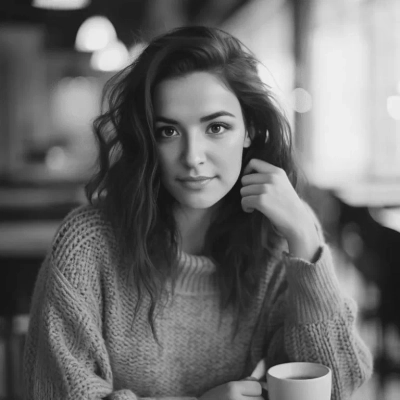4 Ways AI Helps Fashion Businesses Understand Customer Preferences
Recent research from experts reveals how artificial intelligence transforms how fashion companies understand their customers. AI technology now detects emerging trends, improves product discovery, and uncovers the emotional connections between textures and customer preferences. These technological advancements offer fashion businesses unprecedented insights into consumer behavior without requiring extensive manual analysis.
Detecting Fashion Trends with Data Analysis
We are utilizing AI to interpret customers' tastes in fashion by conducting an analysis of substantial data sets taken from social media trends, buying patterns, and live browsing behaviors. The application of machine learning opens up the detection of very fine style patterns, like the transition of color palettes and the selection of fabrics, far before the patterns are accepted by the mainstream. The analytics provided by AI help to divide the customers by not only demographics but also lifestyle affinities and mood-based shopping habits, thus making it possible to give hyper-personalized recommendations.
What is the most shocking finding? AI pointed out that a lot of the customers were attracted to the idea of seasonless fashion, that is, pieces that can be worn throughout the year and are not restricted to any particular season, the major reasons being the sustainability factors and the customers' demand for longevity in their wardrobe choices.

AI Image Recognition Improves Product Discovery
We implemented AI-powered image recognition technology to enhance product descriptions for a fashion retailer, which significantly improved how customers find and interact with products they're interested in. This technology allowed us to create more accurate product categorization and provide better recommendations based on visual preferences rather than just text searches. The most surprising insight was that this implementation resulted in a 20% increase in sales, which was substantially higher than our initial projections. This confirmed our belief that customers respond positively when they can more easily find products that match their aesthetic preferences.

AI Reveals Emotional Comfort Drives Fashion Choices
We have integrated AI technology into our analysis of customer feedback as well as image saving and product viewing duration. The system now pays closer attention to both her actual purchases and her hidden dreams. The collected data enables us to create products which seem naturally part of her existing world.
The most surprising discovery emerged from our research. Women preferred comfort over appearance but their preferences defied conventional expectations. The emotional comfort factor proved more important than physical attributes such as softness or stretch in their preferences. The women sought clothing items which simultaneously provided them with security and sensuality and self-perception. The discovery transformed our approach to fabric selection and pattern design and color scheme development.
Browsing Patterns Uncover Texture-Mood Fashion Connections
I use AI to understand customer fashion preferences by analyzing patterns in their browsing behavior, saved items, and even the specific color tones they linger on in digital lookbooks. This technology helps identify which styles truly resonate on a deeper level than traditional market research. One interesting pattern we uncovered was that customers who search for "minimalist fashion" frequently end up purchasing statement accessories—showing that even those who identify as minimalists still want their outfits to have a focal point.
The most surprising insight from our AI analysis has been discovering how profoundly mood influences fashion choices. During winter months, we found it wasn't just darker color palettes trending—it was the significant spike in searches for softer textures like knits and velvets. Customers were subconsciously associating texture with comfort during colder weather. This revelation has transformed our approach to styling and recommendations, focusing not just on visual aesthetics but on the emotional intent behind outfit choices.



